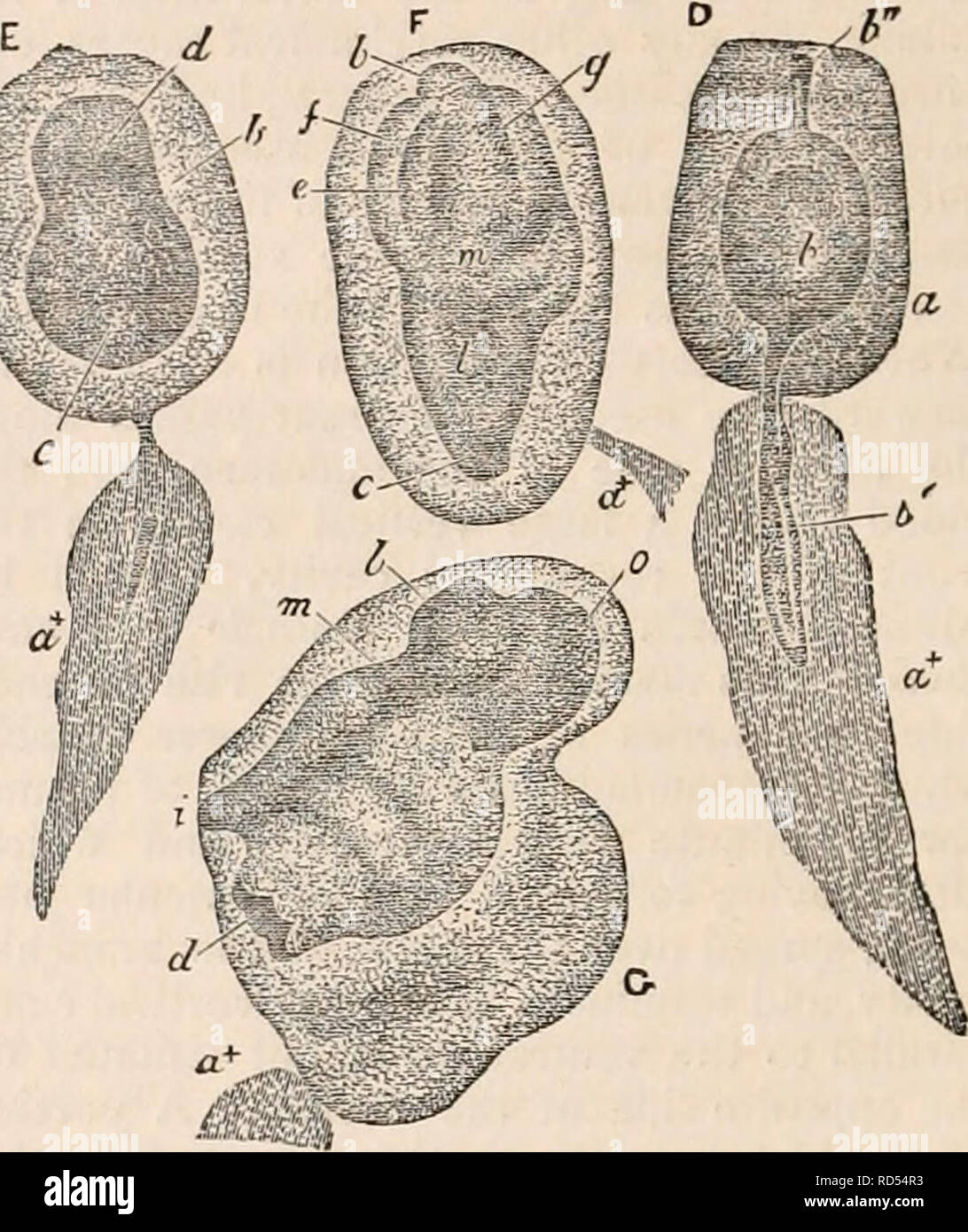. The cyclopædia of anatomy and physiology. Anatomy; Physiology; Zoology. 77(e Development of the Larva of Amaroucium proliferum. (After Milne-Edwards.) A. An ovum the inclination of which is far advanced, magnified about 30 times. The tail, (6') is becoming distinct from the trunk (i) ; and two lobules begin to appear on the anterior extremity of the latter (l>n). B. An ovum arrived at the full term of incubation, magnified about 30 times, a, the tegumentaiy portion ; b1, caudal portion ; b", b111, anterior appendages. c. Larval ascidia lately born, magnified about 25 times, a, tegume

Image details
Contributor:
The Book Worm / Alamy Stock PhotoImage ID:
RD54R3File size:
7.2 MB (401.2 KB Compressed download)Releases:
Model - no | Property - noDo I need a release?Dimensions:
1449 x 1725 px | 24.5 x 29.2 cm | 9.7 x 11.5 inches | 150dpiMore information:
This image is a public domain image, which means either that copyright has expired in the image or the copyright holder has waived their copyright. Alamy charges you a fee for access to the high resolution copy of the image.
This image could have imperfections as it’s either historical or reportage.
. The cyclopædia of anatomy and physiology. Anatomy; Physiology; Zoology. 77(e Development of the Larva of Amaroucium proliferum. (After Milne-Edwards.) A. An ovum the inclination of which is far advanced, magnified about 30 times. The tail, (6') is becoming distinct from the trunk (i) ; and two lobules begin to appear on the anterior extremity of the latter (l>n). B. An ovum arrived at the full term of incubation, magnified about 30 times, a, the tegumentaiy portion ; b1, caudal portion ; b", b111, anterior appendages. c. Larval ascidia lately born, magnified about 25 times, a, tegumentary portion ; b, sac enclosing the yolk and forming the proper tunic of the body of the larva; b11, processes terminating in suckers, and serving to fix the animal; a, tail formed by a prolongation, of the integuments, and enclosing a tubular ap- pendage of the vitelline sac. D. The same larva, observed some hours after having fixed itself, magnified about 20 times, b11, traces of the anterior processes; b1, vitelline prolongation of tail nearly absorbed, and the central sac, enclosing vi- tellus, is spherically contracted. E. The same larva about 20 hours after fixing, magnified about 25 times. The caudal elongation of the internal tunic (containing the vitelline matter) has entirely disappeared, and this tunic (6) has taken the form of an ovoid sac, slightly contracted in the middle; a pale yellow circle (rf) at the anterior ex- tremity surrounds a spot that will become the mouth, and posteriorly another, clear, spot (c) appears, in which the heart will be developed. F. The same larva seen at the end of the second day of its sedentary state, magnified about 25 times, b. tunic proper; c, pericardium spot; e, branchial sac, beginning to be developed; f, thoracic sinus; g, cloaca; /, stomach; m, intestine, full of ftecal matter; a, vestige of tail, of which a part only is figured. The external orifices are not yet formed. The development of this individual was much more rapid